Abstract
Twelve boys and 10 girls on similar long term remission maintenance treatment for lymphoblastic leukaemia had 79 random assays of their red cell 6 thioguanine nucleotide ( 6TGN ) concentrations performed as an index of cytotoxic activity generated by oral 6-mercaptopurine ( 6MP ). Correlation between the dose of 6MP and 6TGN was statistically significant in the girls (r = 0.58, P less than 0.001) but not in the boys (r = 0.15). Additionally, as a group the boys tolerated more 6MP (P less than 0.05), despite similar prescribing criteria, but this did not result in a higher mean 6TGN concentration or increased myelotoxicity. It appears that girls develop 6MP cytotoxicity at lower doses and more predictably than boys. If so, this may be relevant to the as yet unexplained but marked sex difference in prognosis apparent in some studies.
Full text
PDF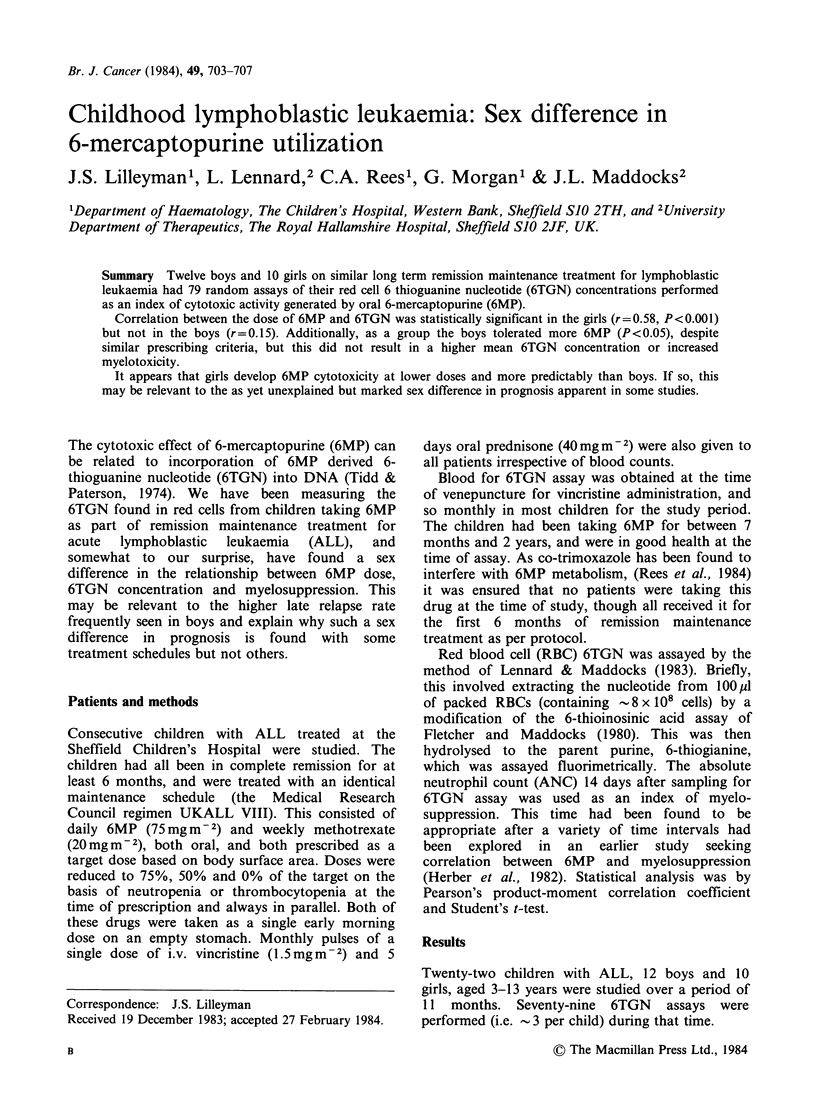
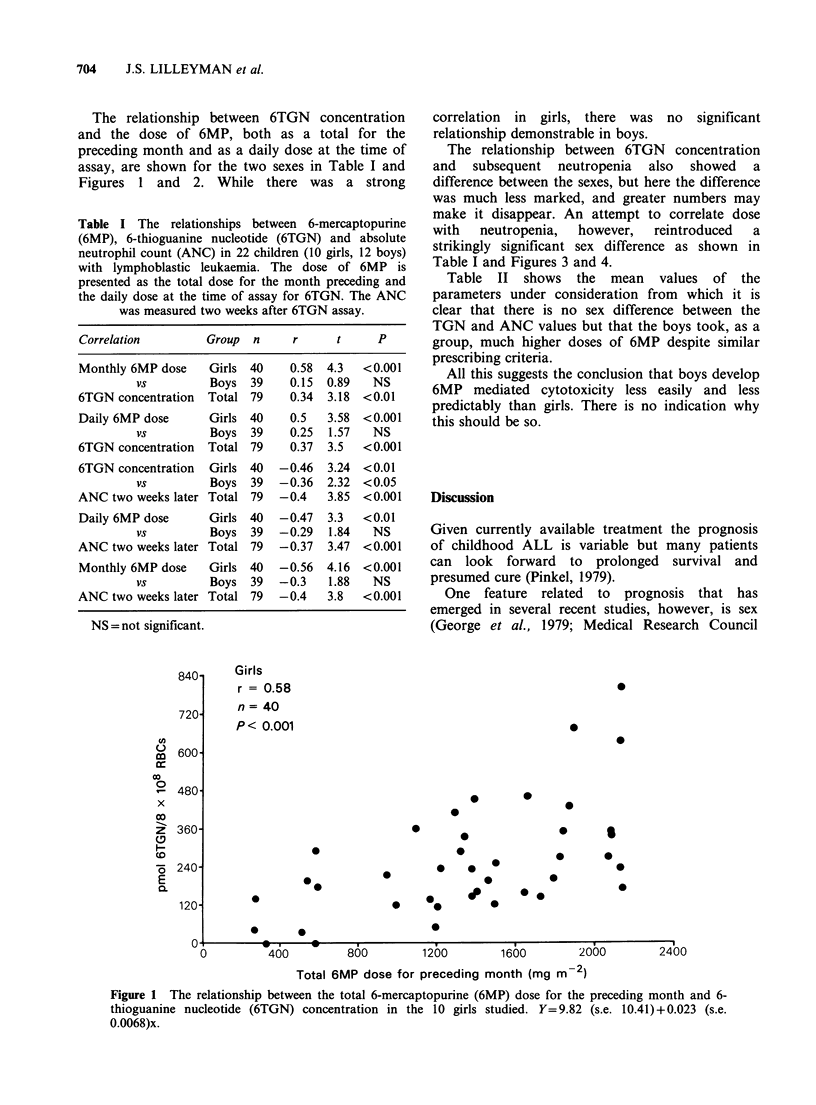
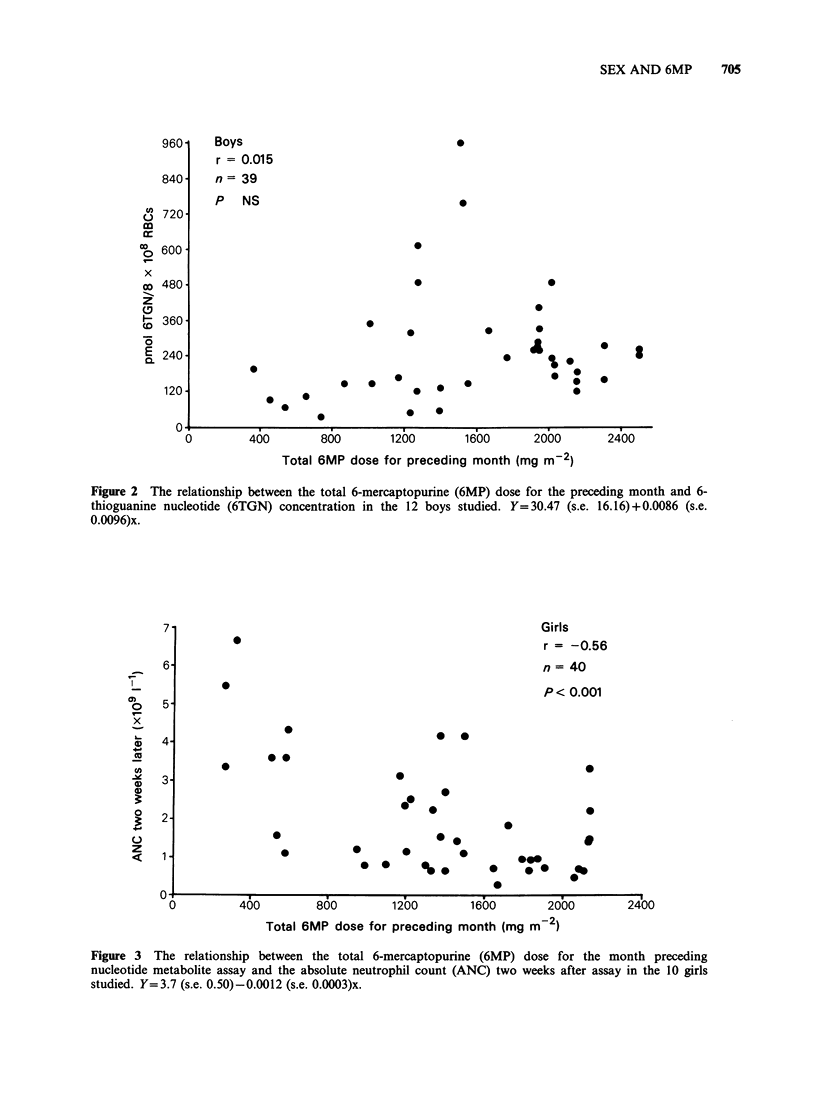
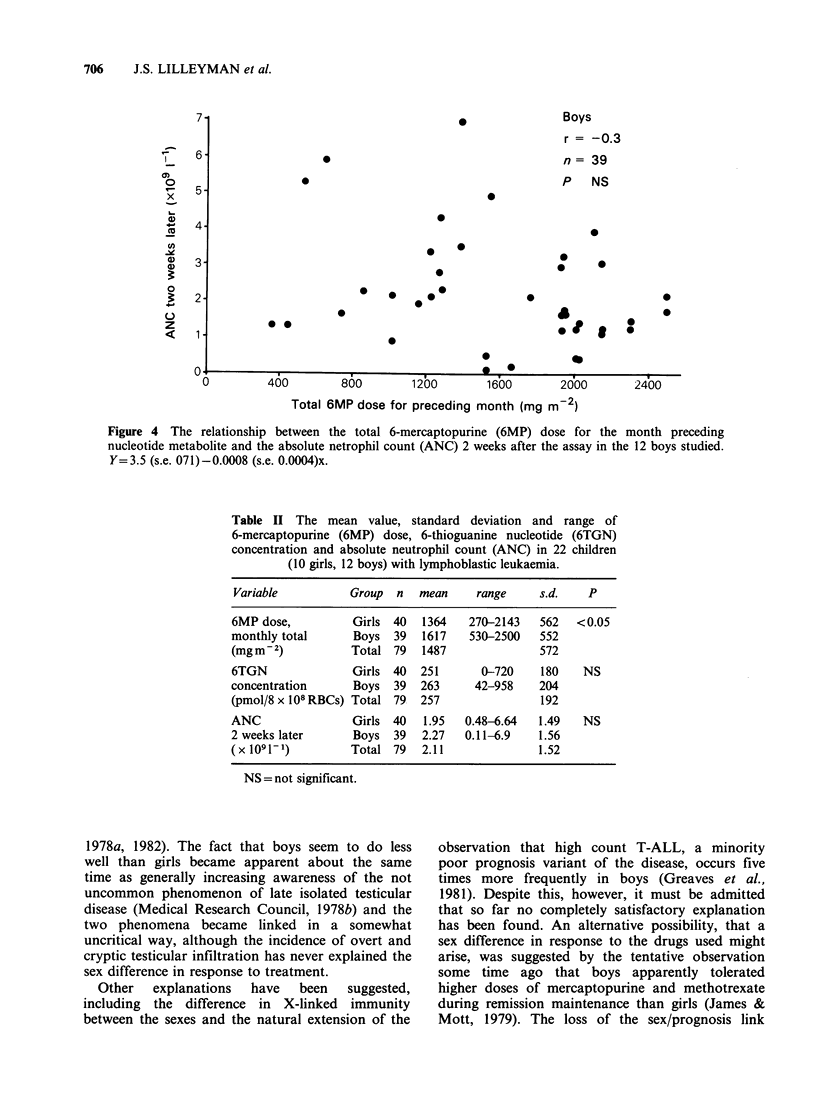
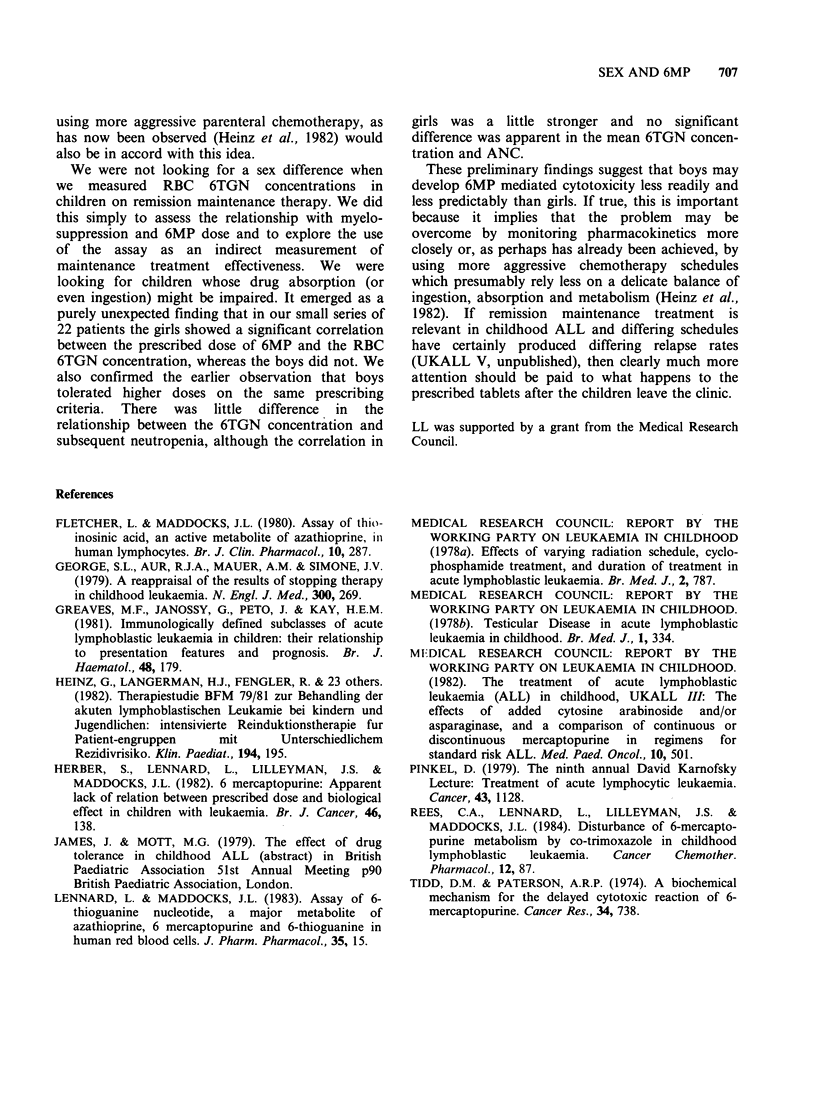
Selected References
These references are in PubMed. This may not be the complete list of references from this article.
- Fletcher L., Maddocks J. L. Assay of thioinosinic acid, an active metabolite of azathioprine, in human lymphocytes. Br J Clin Pharmacol. 1980 Sep;10(3):287–292. doi: 10.1111/j.1365-2125.1980.tb01757.x. [DOI] [PMC free article] [PubMed] [Google Scholar]
- George S. L., Aur R. J., Mauer A. M., Simone J. V. A reappraisal of the results of stopping therapy in childhood leukemia. N Engl J Med. 1979 Feb 8;300(6):269–273. doi: 10.1056/NEJM197902083000601. [DOI] [PubMed] [Google Scholar]
- Greaves M. F., Janossy G., Peto J., Kay H. Immunologically defined subclasses of acute lymphoblastic leukaemia in children: their relationship to presentation features and prognosis. Br J Haematol. 1981 Jun;48(2):179–197. [PubMed] [Google Scholar]
- Herber S., Lennard L., Lilleyman J. S., Maddocks J. 6-Mercaptopurine: apparent lack of relation between prescribed dose and biological effect in children with leukaemia. Br J Cancer. 1982 Jul;46(1):138–141. doi: 10.1038/bjc.1982.175. [DOI] [PMC free article] [PubMed] [Google Scholar]
- Lennard L., Maddocks J. L. Assay of 6-thioguanine nucleotide, a major metabolite of azathioprine, 6-mercaptopurine and 6-thioguanine, in human red blood cells. J Pharm Pharmacol. 1983 Jan;35(1):15–18. doi: 10.1111/j.2042-7158.1983.tb04255.x. [DOI] [PubMed] [Google Scholar]
- Pinkel D. The ninth annual David Karnofsky Lecture. Treatment of acute lymphocytic leukemia. Cancer. 1979 Mar;43(3):1128–1137. doi: 10.1002/1097-0142(197903)43:3<1128::aid-cncr2820430352>3.0.co;2-y. [DOI] [PubMed] [Google Scholar]
- Rees C. A., Lennard L., Lilleyman J. S., Maddocks J. L. Disturbance of 6-mercaptopurine metabolism by cotrimoxazole in childhood lymphoblastic leukaemia. Cancer Chemother Pharmacol. 1984;12(2):87–89. doi: 10.1007/BF00254595. [DOI] [PubMed] [Google Scholar]
- Tidd D. M., Paterson A. R. A biochemical mechanism for the delayed cytotoxic reaction of 6-mercaptopurine. Cancer Res. 1974 Apr;34(4):738–746. [PubMed] [Google Scholar]


